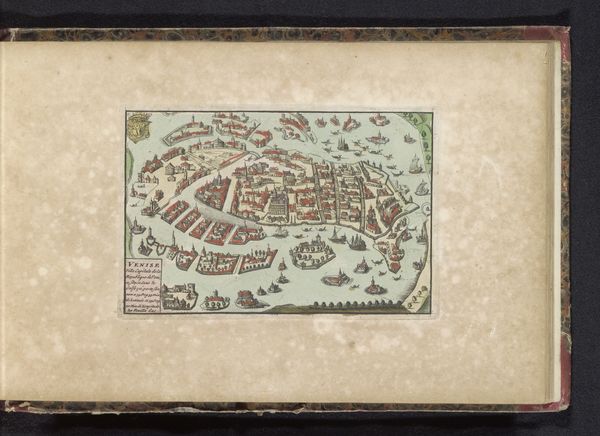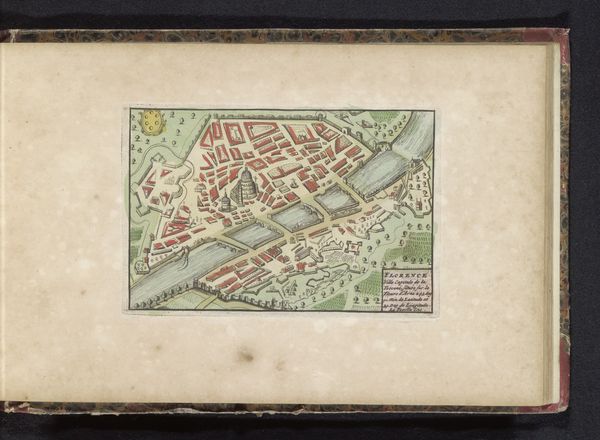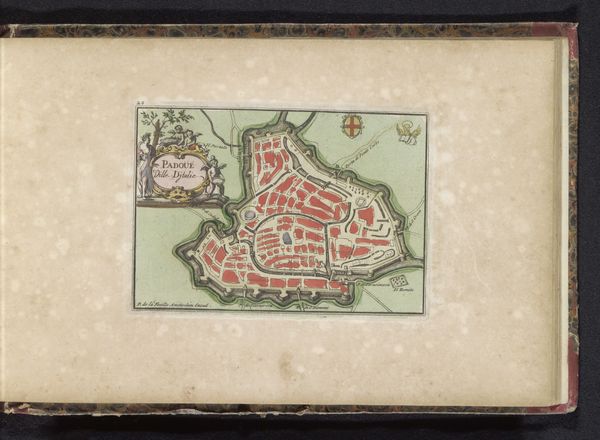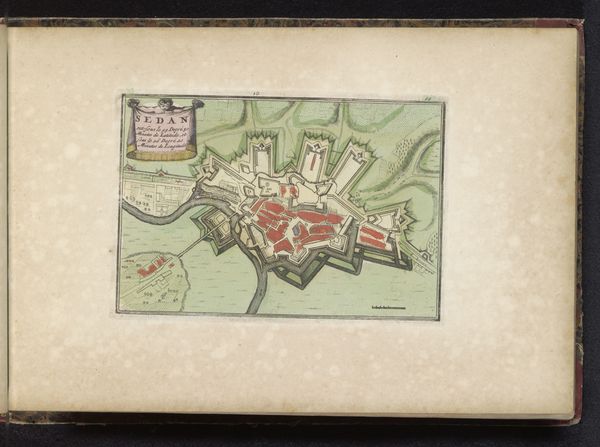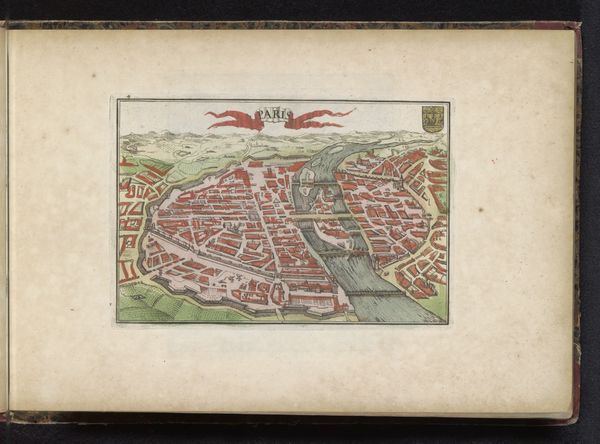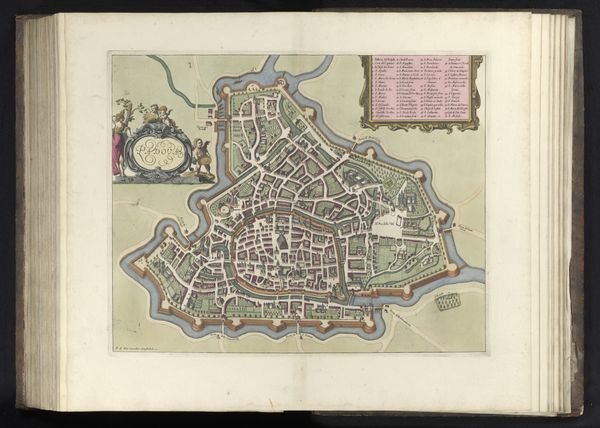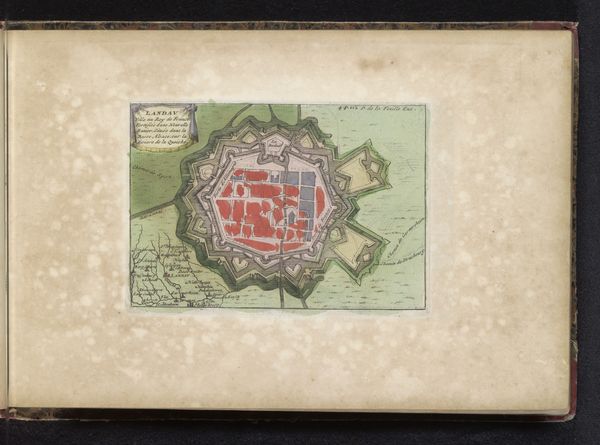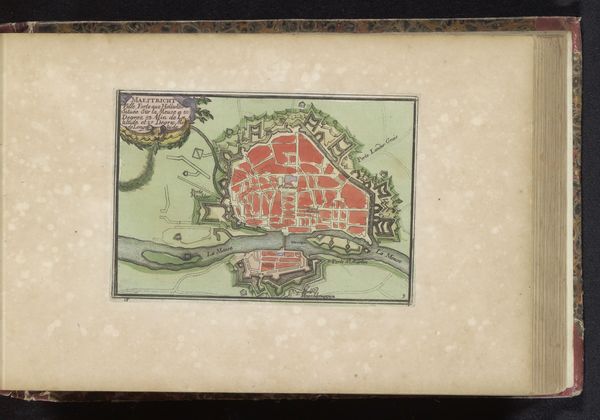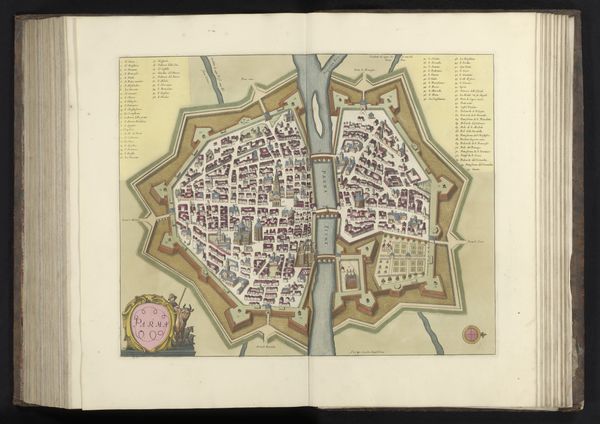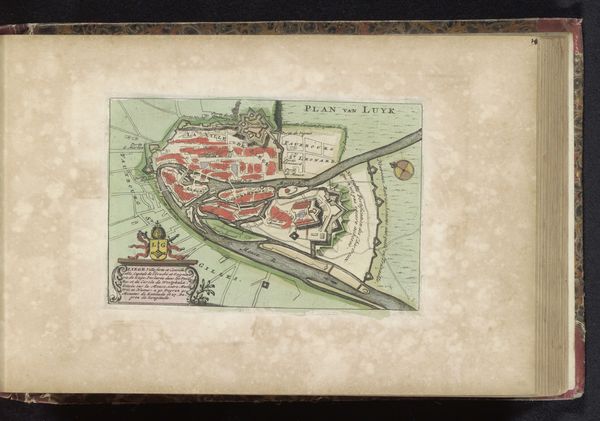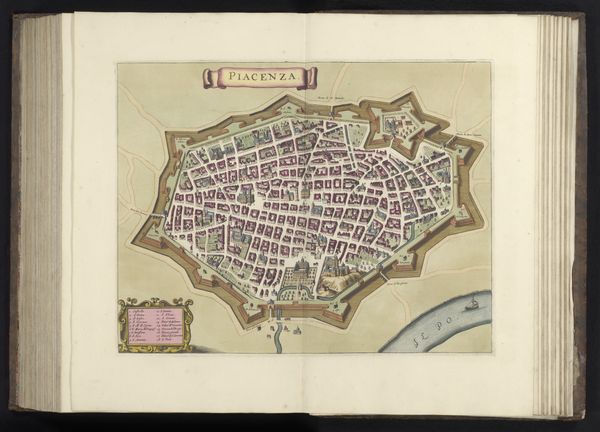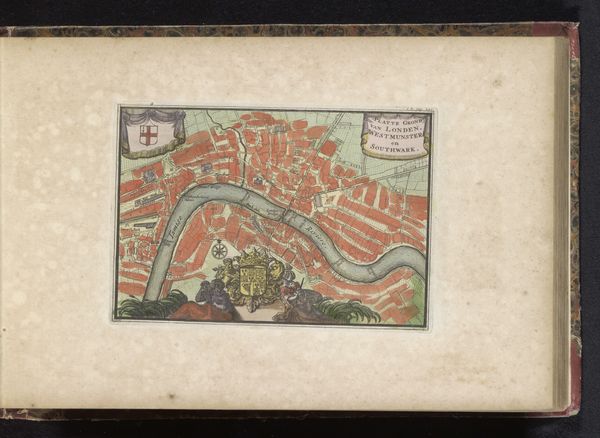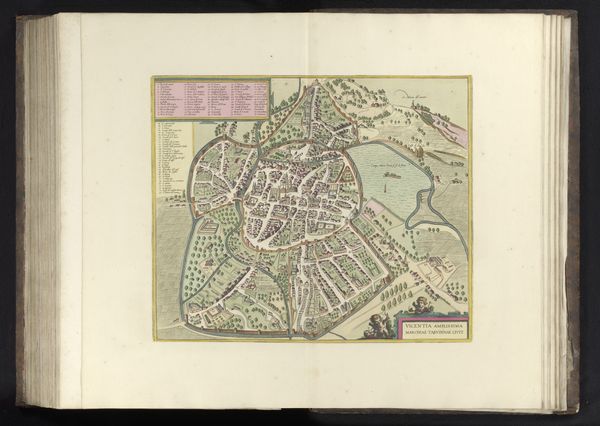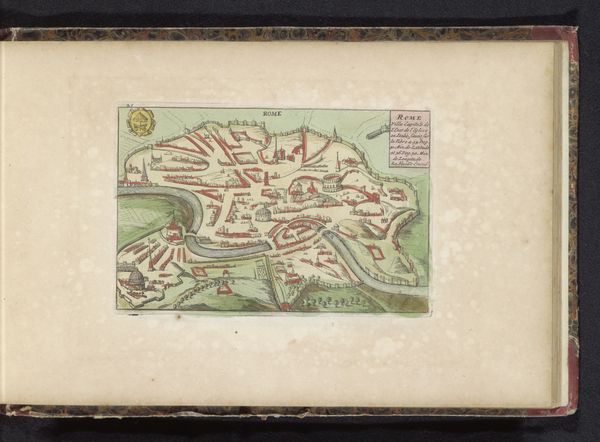
drawing, print, watercolor
#
drawing
#
baroque
# print
#
watercolor
#
coloured pencil
#
cityscape
#
history-painting
Dimensions: height 123 mm, width 163 mm
Copyright: Rijks Museum: Open Domain
Curator: Looking at this, I am reminded of the concept of panopticism. It feels like a blueprint for control, wouldn't you agree? Editor: This captivating “Plattegrond van Ferrara,” created around 1735 by an anonymous hand, is rendered with watercolor, drawing, and printmaking techniques. The effect is incredibly detailed and vibrant, though. Curator: Vibrant is one word. To me, the clear, defined spaces are suggestive of power dynamics inherent in urban planning, the power to define, divide, and control the population through built environments. Editor: Absolutely. Ferrara was, for centuries, the seat of the Este dynasty, and its urban development became intrinsically tied to princely ambition and self-representation. So this wasn't only about controlling populations but displaying power. This bird's eye view became increasingly popular as it captured Baroque sensibilities. Curator: So, even the artistry reflects the existing hierarchy. We see this in miniature, perhaps, in the placement of the cartouche at the upper-right, with a figure, angelic and authoritarian at once. It feels propagandistic. Editor: Possibly, or aspirational. The image idealizes the perfectly laid out city, fortified against outside threats and controlled from within, presenting a narrative of order and prosperity. It represents the ideal Renaissance city, even if its historical accuracy can be debated. The use of watercolours, typical of cartography at the time, provides additional dimension. Curator: How much of history are we prepared to take at face value, though? What does it hide in its pursuit of an impossible 'accuracy'? And who benefitted from it? I can’t help thinking about Henri Lefebvre’s writings about the production of space and the subjugation it represents. Editor: True, we need to challenge perspectives and probe for biases. This representation underscores the way social structures shape and are shaped by space. Considering who commissioned and who consumed it can only enhance our reading of this image, because after all, the drawing gives prominence to both princely rule and the ambition of city rulers, whose role could be sustained through strategic public images. Curator: Ultimately, the "Plattegrond van Ferrara" reminds us that even seemingly objective records like maps can reveal narratives of power, control, and the way social realities are inscribed in urban environments. It compels a critique. Editor: A really important intervention that shows how cultural imagery often masks agendas and power struggles. These need unpacking constantly, making this beautiful map even more evocative and relevant.
Comments
No comments
Be the first to comment and join the conversation on the ultimate creative platform.
